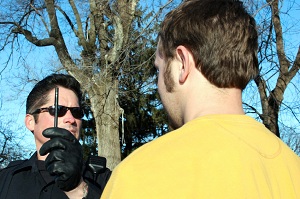Challenging the Validity of Field Sobriety Tests after a California DUI Arrest
During a traffic stop, it is the police officer’s responsibility to look for signs of intoxication. The officer will try to notice if there is any alcohol visible in the vehicle. He or she will listen for slurred speech and attempt to detect the odor of alcohol on your breath. If there are any signs that you may be intoxicated, you may be asked to perform a few field sobriety tests. How you perform in the tests may lead to a breath test or a trip to the station for an official blood test.
There are a number of mistakes that can be made during a field sobriety test in California. Was the test given on an uneven surface? A couple of the series of tests involve balance challenges. When these tests are taken on cracked or uneven surfaces, even a sober suspect may struggle to appear coordinated.

It is also important to determine the ability of the officer to accurately conduct the tests. The Horizontal Gaze Nystagmus test requires officers to carefully watch for an involuntary jerking of the eye. Only a trained professional can truly notice the difference between a smooth and jerking eye, and there are many medical conditions that can make this test an inaccurate way to prove intoxication.
 California Criminal Defense Attorneys
California Criminal Defense Attorneys

